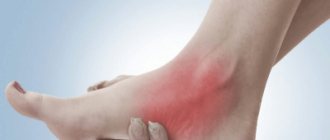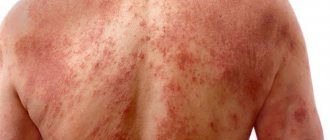What is axonal polyneuropathy
Polyneuropathy (also known as polyneuritis) is a clinical syndrome that occurs due to a number of factors affecting the peripheral nervous system and is characterized by vague pathogenetic changes. The disease occupies one of the leading places in the list of ailments of the peripheral nervous system, second only to vertebrogenic pathology, which is superior in the complexity of the clinical picture and the consequences that develop because of it.
Asconal polyneuropathy is considered an interdisciplinary problem; doctors of various specializations often encounter it. First of all, people with this disease contact a neurologist. The frequency of the syndrome occurring is unknown, since there are no statistical data.
At the moment, only three important pathomorphological mechanisms are known that lie at the origins of the formation of polyneuropathy:
- Wallerian degeneration;
- primary demyelination;
- primary axonopathy.
According to the immunological theory, polyneuropathy is the result of the cross-production of immune globulins that destroy their own cells, resulting in tissue necrosis and muscle inflammation.
Researchers put forward a number of hypotheses for the occurrence and problems of the course of axonal polyneuropathy:
- Vascular. It is based on the involvement of blood vessels in the process, through which oxygen and nutrients enter the peripheral nerves. The characteristics of the blood change in terms of qualitative and quantitative composition, which can lead to ischemia of nerve endings.
- Oxidative stress theory. The formation of the disease is attributed to a disturbance in the metabolism of nitric oxide, as a result of which the potassium-sodium mechanisms underlying the formation of nervous excitation and the conduction of impulses along the nerves change.
- Theory of deactivation of nerve growth factors. It suggests that the disease occurs due to a lack of axonal transport with the subsequent development of axonopathy.
- Immunological. Explains the development of the disease as a result of cross-formation of antibodies to the structures of the peripheral nervous system, which is accompanied by autoimmune inflammation and then necrosis of the nerves.
Even with the use of ultra-modern diagnostic methods, it is difficult to find a reliable cause of the pathology; it is possible to find out only in 50-70% of victims.
There are a lot of factors for the occurrence of polyneuropathy of the lower extremities of the axonal type. However, even innovative research methods do not allow us to establish the true etiology of the disease.
Expert opinion
Author: Alexey Vladimirovich Vasiliev
Head of the Research Center for Motor Neuron Disease/ALS, Candidate of Medical Sciences, doctor of the highest category
Axonal polyneuropathy is one of the most dangerous neurological diseases, accompanied by damage to the peripheral nervous system. During the disease, peripheral nerve fibers are destroyed.
There are several reasons for the occurrence of axonal polyneuropathy. The most common:
- Diabetes mellitus disrupts the structure of the blood that nourishes the nerves, which in turn causes a disruption in metabolic processes.
- Long-term deficiency of B vitamins. They are the most important for the proper functioning of the nervous system, so a long-term deficiency can lead to axonal polyneuropathy.
- The effects of toxins on the body. These include a variety of poisonous substances, for example, alcohol, as well as HIV. In case of poisoning with hazardous substances, the disease can develop within a few days.
- Hereditary factor.
- Guillain-Barre syndrome.
- Various injuries, which also include long-term compression of the nerves, which is typical for hernia or osteochondrosis.
Treatment of axonal polyneuropathy must be comprehensive, otherwise the desired effect will not be achieved. It is strictly forbidden to self-medicate and if the first symptoms occur, you should immediately consult a doctor. Doctors at the Yusupov Hospital select treatment individually for each patient. Depending on the severity of the pathology and symptoms, complex treatment is prescribed under the supervision of experienced specialists.
Axonopathy: types, diagnosis, treatment, causes, symptoms
Axonopathy is a disorder in which the processes of nerve cells are affected. They are located throughout the body, so the symptoms of the disease can vary.
Axonal damage is classified as a group of polyneuropathies. The disease is considered a slowly developing degenerative process. A neurologist treats axonopathies.
Like all disorders of the peripheral nervous system, the disease is manifested by impaired movement and sensitivity, and autonomic symptoms. With adequate treatment, degeneration can be stopped, thereby improving the prognosis for life.
Peroneal nerve neuropathy: symptoms and treatment
The appearance of pain in the lower leg or foot is often a symptom of peroneal nerve neuropathy. The pathology is not life-threatening if it is identified and treated in a timely manner. However, it can cause a lot of discomfort and limit physical activity. Especially in children. Therefore, you should not delay seeking medical help.
Anatomical parameters
To better understand peroneal nerve neuropathy, it is necessary to have a general understanding of its anatomical features.
In general, this structural unit of the peripheral nervous system is just a part of the sciatic nerve, which continues after leaving the sacral nerve plexus.
Towards the lower third of the thigh it will be divided into 2 segments - the peroneal nerve and also the tibial nerve.
After crossing the fossa below the knee, the fibular fiber reaches the head of the bony unit of the same name. Then it bifurcates again - into superficial and also deep branches. Therefore, by the localization of pathological symptoms, one can judge the level where the pathological lesion is located - to distinguish between neuropathy of the tibial nerve or the peroneal segment.
Thus, the deep peroneal nerve, moving through the anterior zone of the leg, reaches the back of the unilateral foot, where it bifurcates again. He is responsible for the dorsal movement of the foot in one plane, as well as raising its outer edge.
While the superficial branch, innervating the anterolateral part of the limb, is responsible for raising and simultaneous flexion of the foot.
The last division of the small tibial nerve is carried out in the area of the medial third of the leg - into two cutaneous dorsal nerves.
When examined by characteristic changes, a neurologist will differentiate neuropathy of the tibial nerve from neuritis of the peroneal nerve. Skin and muscle susceptibility, arbitrariness of movements and accuracy of reflexes are assessed - axonal damage will lead to neuritis of the tibial nerve, as well as the peroneal branch.
Causes
The development of a pathological focus in a nerve fiber can occur for many reasons. Most often, specialists diagnose the following:
- various injuries of the peroneal nerve - direct injury to the limb, or compression by colloid cords after surgical interventions, simultaneously with damage to the tibial nerve;
- compression of the nerve as a result of tunnel syndrome - typical for people whose profession requires them to be in a position for a long time that is uncomfortable for the lower extremities, for example, parquet layers, seamstresses;
- vascular pathologies and other blood supply disorders that lead to tissue hypoxia - a decrease in the number of oxygen molecules in them and, accordingly, a failure of metabolic processes;
- lesions of the peroneal nerve of a toxic nature - diabetic, renal, as a rule, have a symmetrical nature of the “golf” type;
- infections - involving one of the branches of the fibular fiber in the inflammatory process, or even simultaneously with inflammation of the tibial nerve;
- compression-ischemic neuropathy occurs with tumor neoplasms - as the tumor grows and metastasizes.
Less commonly, polyneuropathy of a traumatic nature is the result of systemic diseases. For example, gout, osteoarthritis or rheumatoid arthritis.
Symptoms
Since the peroneal nerve has a significant length, the clinical picture will directly depend on the level at which the pathological focus arose.
Thus, when the fiber is compressed in the area of the knee fossa, the sensitivity of the skin on the anterolateral surface of the leg, as well as the foot, will be impaired. People stop perceiving touch or temperature fluctuations in the air. Unpleasant symptoms intensify when trying to sit down.
Among the motor disorders, difficulty in straightening the foot is typical. It is impossible to lift exactly its outer edge.
Causes
The most common causes of axonal polyneuropathy of the lower extremities:
- exhaustion of the body;
- long-term deficiency of B vitamins;
- ailments leading to dystrophy;
- acute infections;
- toxic damage from mercury, lead, cadmium, carbon monoxide, alcoholic beverages, methyl alcohol, organophosphorus compounds, medications taken without the consent of a doctor;
- diseases of the cardiovascular, hematopoietic, circulatory and lymphatic systems;
- endocrinological pathologies, including insulin dependence.
The main factors that provoke the development of motor or sensorimotor axonal polyneuropathy are:
- endogenous intoxication in renal failure;
- autoimmune processes occurring in the body;
- amyloidosis;
- inhalation of toxic substances or vapors.
The disease can also be caused by heredity.
A lack of B vitamins in the body, and especially pyridoxine and cyanocobalamin, has an extremely negative effect on the conductivity of nerve and motor fibers and can cause sensory axonal polyneuropathy of the lower extremities. The same happens with chronic alcohol intoxication, helminthic infestation, and diseases of the gastrointestinal tract, which impair the rate of absorption.
Toxic poisoning with drugs, aminoglycosides, gold salts and bismuth occupy a large percentage in the structure of factors of axonal neuropathy.
In patients with diabetes, peripheral nerve function is impaired due to the neurotoxicity of ketone bodies, i.e. metabolites of fatty acids. This happens due to the body’s inability to use glucose as the main source of energy. Therefore, fats are oxidized instead.
With autoimmune diseases occurring in the body, the human immune system attacks its own nerve fibers, perceiving them as a source of danger. This occurs due to a provocation of the immune system that occurs when taking immunostimulating medications and unconventional treatment methods carelessly. Therefore, in people who are prone to autoimmune diseases, the triggering factors for axonal polyneuropathy are:
- immunostimulants;
- vaccines;
- autohemotherapy.
With amyloidosis, a protein called amyloid accumulates in the body. It is this that disrupts the basic functions of nerve fibers.
Axonopathy of the pudendal nerve
Have you been trying to heal your JOINTS for many years?
Head of the Institute for the Treatment of Joints: “You will be amazed at how easy it is to cure your joints by taking the product every day for 147 rubles ...
Read more "
Axonopathy is a disorder in which the processes of nerve cells are affected. They are located throughout the body, so the symptoms of the disease can vary.
OUR READERS RECOMMEND!
Our readers successfully use Sustalaif to treat joints. Seeing how popular this product is, we decided to bring it to your attention. Read more here...
Axonal damage is classified as a group of polyneuropathies. The disease is considered a slowly developing degenerative process. A neurologist treats axonopathies.
Like all disorders of the peripheral nervous system, the disease is manifested by impaired movement and sensitivity, and autonomic symptoms. With adequate treatment, degeneration can be stopped, thereby improving the prognosis for life.
Causes and pathogenesis of the disease
Damage to peripheral nerve processes can develop due to the following reasons:
- Chemical poisoning . With prolonged exposure to poison on the body, a disruption of the intracellular metabolism of neurons occurs, as a result of which a deficiency of essential nutrients develops and the tissue undergoes degeneration. Toxic substances include: methyl alcohol, carbon monoxide, arsenic.
- Endocrine disorders . Due to hormonal imbalance, metabolic processes in the body slow down. This affects all functions, including the transmission of nerve impulses along axons.
- Vitamin deficiency . Lack of nutrients leads to slowly progressive destruction of peripheral processes.
- Chronic intoxication with ethyl alcohol . Axonopathy often develops in individuals who have suffered from alcoholism for several years.
The mechanism of occurrence of disturbances in axons is considered at the cellular level. In the peripheral processes there are no organelles that produce protein compounds (EPS, ribosomes).
Therefore, for the functioning of the peripheral parts, nutrients come from the cell body (neuron). They move to axons using special transport systems.
Under the influence of toxic substances or hormonal changes, the flow of proteins to the periphery is disrupted.
Damage to the peripheral processes gradually leads to the death of the entire cell. In this case, it is impossible to restore functions. If the body of the neuron remains intact, then regression of the pathology is possible.
Types of pathological condition
There are 3 types of axonopathy, which differ in the mechanism of development, severity of the clinical picture and etiological factor.
- Type 1 disorder refers to acute degenerative processes; the disease occurs when the body is seriously poisoned.
- The subacute pathological process is characterized by type 2 , which is caused by metabolic disorders. Often, this is diabetes mellitus, gout, etc.
- Peripheral process degeneration type 3 develops more slowly than other variants of the disease. This type of disease is often observed in people with weakened immune systems and those suffering from alcoholism.
Clinical manifestations
The initial symptom of axonopathy is a decrease in sensitivity, which occurs gradually. The clinical picture is characterized by a sensation of pins and needles in the foot and hand, and numbness of the fingers.
Then there is a complete loss of deep sensitivity like “socks” and “gloves”. As the pathological condition progresses, a person may not feel pain and temperature stimuli.
A pronounced degenerative process is manifested by motor disorders. The patient is worried about weakness and lameness. In the terminal stage of the disease, peripheral paralysis and paresis develop. Tendon reflexes are weakened or not evoked at all.
Axons of the lower and upper extremities and cranial nerves undergo degeneration. Axonopathy of the peroneal nerve is expressed by the following symptoms:
- the motor activity of the leg suffers - the process of flexion and extension is disrupted;
- there is no pronation and supination;
- The strength in the calf muscles decreases, as a result of which a change in gait occurs.
Damage to the oculomotor nerve leads to strabismus and ptosis. There may be a decrease in visual acuity and a narrowing of the field of view.
If the phrenic nerve is involved in the degenerative process, then a characteristic Horner's syndrome occurs, which is characterized by the development of ptosis, miosis and enophthalmos (retraction of the eyeball).
When the vagus nerve is damaged, the innervation of internal organs is disrupted, clinically this is manifested by tachycardia and increased respiratory rate.
Diagnostic methods and treatment
The disease is diagnosed by a neurologist during a specific examination. He performs a sensory test, checking muscle strength and reflexes. To determine the causes of the pathological condition, laboratory diagnostics are performed. Patients must undergo a general and biochemical blood test. The content of minerals is assessed: calcium, sodium and potassium, glucose.
In case of hemodynamic disturbances, an ECG is performed. A chest x-ray is also indicated. To exclude diseases of the central nervous system, electroencephalography and ultrasound scanning of the vessels of the head are performed.
Specific diagnostics include electroneuromyography. This study allows us to assess the extent of damage to the peripheral processes, as well as determine how the impulse is carried out.
These include drugs from the group of nootropics, B vitamins. Medicines are prescribed
Piracetam is one of the most famous nootropics
Phenotropil, Piracetam, Neuromultivit, which help restore metabolism inside the cells of the nervous system. Drugs are also indicated to improve blood circulation in the brain, with their help improving the nutrition of brain tissue - Cerebrolysin, Actovegin.
In case of hormonal imbalance, it is necessary to treat the underlying disease that led to the development of axonopathy. Complications of the pathology include paralysis, blindness, cardiovascular diseases and stroke.
First signs
The disease usually begins to develop with damage to thick or thin nerve fibers. Often, axonal polyneuropathy has a distal symmetrical distribution on the hands or feet. Neuropathy most often affects the lower extremities first and then spreads symmetrically up the body. The most common primary symptoms of damage include:
- muscle weakness;
- pain syndrome in the limbs;
- burning;
- crawling sensation;
- numbness of the skin.
Symptoms are most pronounced in the evening and at night.
Symptoms
Doctors divide the chronic, acute and subacute course of axonal polyneuropathy. The disease is divided into two types: primary axonal and demyelinating. During the course of the disease, demyelination is added to it, and then a secondary axonal component.
The main manifestations of the disease include:
- weakness in the muscles of the legs or arms;
- spastic paralysis of the limbs;
- feeling of twitching in muscle fibers;
- dizziness with a sudden change in body position;
- swelling of the limbs;
- burning;
- tingling;
- crawling sensation;
- decreased sensitivity of the skin to high or low temperature, pain and touch;
- impaired speech clarity;
- problems with coordination.
The following symptoms are considered vegetative signs of sensorimotor polyneuropathy of the asconal type:
- rapid or, on the contrary, slow heart rate;
- excessive sweating;
- excessive dry skin;
- change in skin color;
- ejaculation disorder;
- erectile disfunction;
- problems with urination;
- failure of motor functions of the gastrointestinal tract;
- increased salivation or, conversely, dry mouth;
- eye accommodation disorder.
The disease manifests itself in dysfunction of damaged nerves. It is the peripheral nerve fibers that are responsible for the motor functions of muscle tissue, sensitivity, and also have a vegetative effect, that is, they regulate vascular tone.
Disorders of nerve conduction function are characterized by sensitivity disorders, for example:
- crawling sensation;
- hyperesthesia, that is, increased sensitivity of the skin to external irritants;
- hypoesthesia, that is, decreased sensitivity;
- lack of sensation of one's own limbs.
When autonomic fibers are affected, the regulation of vascular tone goes out of control. With axonal demyelinating polyneuropathy, compression of the capillaries occurs, causing the tissue to swell. The lower and then the upper limbs, due to the accumulation of fluid in them, significantly increase in size. Since with polyneuropathy of the lower extremities the main amount of blood accumulates in the affected areas of the body, the patient experiences persistent dizziness when taking an upright position. Due to the loss of trophic function, erosive and ulcerative lesions of the lower extremities may occur.
Axonal motor polyneuropathy manifests itself in motor disorders of the upper and lower extremities. When the motor fibers responsible for the movements of the arms and legs are damaged, complete or partial muscle paralysis occurs. Immobilization can manifest itself in a completely atypical manner - you can feel both stiffness of the muscle fibers and their excessive relaxation. With a moderate degree of damage, muscle tone is weakened.
During the course of the disease, tendon and periosteal reflexes may be strengthened or weakened. In rare cases, a neurologist does not observe them. The disease can often affect the cranial nerves, which are manifested by the following disorders:
- deafness;
- numbness of the sublingual muscles and tongue muscles;
- inability to swallow food or liquid due to problems with the swallowing reflex.
When the trigeminal, facial or oculomotor nerve is affected, the sensitivity of the skin changes, paralysis develops, facial asymmetry and muscle twitching occur. Sometimes, when axonal demyelinating polyneuropathy is diagnosed, the lesions of the upper or lower extremities may be asymmetrical. This happens with multiple mononeuropathy, when the knee, Achilles and carporadial reflexes are asymmetrical.
Axonopathy: types, causes, symptoms, diagnosis, treatment
Axonopathy is a disease of the nervous system associated with the involvement of neuron axons in the pathological process due to the influence of various factors.
It is believed that all axonopathies, in their clinical manifestations, are classified as polyneuropathies and require observation by a neurologist.
It is very important to begin timely treatment and conduct extensive diagnostic examinations in order to establish the true cause of the disease.
Axonal nerve damage treatment – Joint Care
Axonal polyneuropathy is a disease associated with damage to motor, sensory or autonomic nerves. This pathology leads to sensory disturbances, paralysis, and autonomic disorders. The disease is caused by intoxication, endocrine disorders, lack of vitamins, malfunction of the immune system, and poor circulation.
There are acute, subacute and chronic forms of axonal demyelinating polyneuropathy. In some cases, the pathology is cured, but sometimes the disease remains forever. There are primary axonal and demyelinating polyneuropathies. During the development of the disease, demyelination is secondary to the axonal component, and the axonal component is secondary to the demyelinating component.
Diagnostics
The main research technique, which makes it possible to detect the localization of the pathological process and the degree of nerve damage, is electroneuromyography.
To determine the cause of the disease, doctors prescribe the following tests:
- determination of blood sugar levels;
- toxicology tests;
- complete urine and blood analysis;
- detection of cholesterol levels in the body.
Violation of nervous functions is established by determining temperature, vibration and tactile sensitivity.
During the initial examination, a visual research technique is used. That is, the doctor to whom the victim turned with complaints examines and analyzes such external symptoms as:
- blood pressure level in the upper and lower extremities;
- sensitivity of the skin to touch and temperature;
- presence of all necessary reflexes;
- diagnosis of swelling;
- study of the external condition of the skin.
Axonal polyneuropathy can be identified using the following instrumental studies:
- magnetic resonance imaging;
- nerve fiber biopsy;
- electroneuromyography.
Treatment of axonal polyneuropathy
Treatment of axonal polyneuropathy should be comprehensive and aimed at the cause of the disease, its mechanisms and symptoms. The guarantee of effective therapy is timely detection of the disease and treatment, which is accompanied by an absolute abstinence from cigarettes, alcohol and drugs, maintaining a healthy lifestyle and following all doctor’s recommendations. First of all, the following therapeutic measures are carried out:
- getting rid of toxic effects on the body, if present;
- antioxidant therapy;
- taking medications that affect the tone of blood vessels;
- replenishment of vitamin deficiency;
- regular monitoring of plasma glucose concentrations.
Special attention is paid to treatment aimed at relieving acute pain syndrome.
If peripheral paresis is present, that is, a significant decrease in muscle strength with a multiple decrease in the amplitude of movements, then physical therapy and special physical exercises aimed at restoring tone to muscle tissue and preventing the formation of various contractures are mandatory. Regular psychological support is especially important, which prevents the patient from falling into depression, accompanied by sleep disorders and excessive nervous excitability.
Treatment of axonal polyneuropathy is a long process, since nerve fibers take a long time to recover. Therefore, you should not expect an immediate recovery and return to your usual lifestyle. Drug therapy includes drugs such as:
- pain reliever;
- glucocorticoids;
- B vitamins;
- antioxidants;
- vasodilators;
- agents that accelerate metabolism and improve blood microcirculation.
Drug therapy is aimed at restoring nerve function, improving the conductivity of nerve fibers and the speed of signal transmission to the central nervous system.
Treatment should be carried out in long courses that should not be interrupted, although the effect does not appear immediately. To eliminate pain and sleep disturbances, the following medications are prescribed:
- antidepressants;
- anticonvulsants;
- drugs that relieve arrhythmia;
- painkillers.
Non-steroidal anti-inflammatory drugs are used to relieve pain. But it is worth remembering that they can only be used for a short period of time, since long-term use can lead to damage to the mucous membrane of the gastrointestinal tract.
Physiotherapeutic methods for treating axonal polyneuropathy include:
- magnetic wave therapy;
- mud therapy;
- electrical stimulation;
- acupuncture;
- massotherapy;
- physical training;
- ultraphonophoresis;
- galvanotherapy.
It is physical therapy that allows you to maintain the performance of muscle tissue and maintain the limbs in the desired position. Regular exercise will restore muscle tone, flexibility and increase the range of motion to normal.
Treatment with drugs for neuropathy of the lower extremities
Neuropathy of the lower extremities is a serious disease of the nervous system. Its treatment is carried out using various drugs, as well as physiotherapy, special procedures, and physical education.
What is lower extremity neuropathy?
Neuropathy is damage to peripheral nerves and the vessels that supply them. Initially, this disease is not inflammatory in nature, but later it can be layered with neuritis - inflammation of the nerve fibers. Neuropathy of the lower extremities is included in the group of polyneuropathies, the basis of which is metabolic disorders, tissue ischemia, mechanical damage, and allergic reactions.
Neuropathy is classified according to the type of course:
- spicy;
- chronic;
- I'll sharpen it up.
According to the type of pathological process in nerve fibers, neuropathy can be axonal (encompasses the processes of neurons - axons) and demyelinating (extends to the sheaths of nerve fibers). According to the symptoms, the pathology is:
- Touch
. Symptoms of sensory impairment and pain predominate. - Motor
. It manifests itself mainly as movement disorders. - Vegetative
. Signs of vegetative and trophic disorders are noted.
The causes of the pathology are varied. Thus, the diabetic form is characteristic of metabolic disorders in neurons in diabetes mellitus. Toxic, alcoholic is caused by poisoning, intoxication. Other possible causes are tumors, deficiency of vitamins B, hypothyroidism, HIV, trauma, family history.
Sensory disorders - the main group of symptoms
Manifestations of pathology in the leg area can be varied, often depending on the cause of neuropathy. If the disease is caused by injury, symptoms affect one limb. In diabetes mellitus and autoimmune diseases, symptoms spread to both legs.
Sensory disturbances can be so unpleasant that they cause depression in the patient.
Sensory disturbances occur in all cases of lower extremity neuropathy. Symptoms are usually observed constantly, do not depend on body position, daily routine, rest, and often cause insomnia.
- numbness of the legs;
- crawling sensation;
- sensation of the presence of foreign objects under the skin.
In addition to the described signs, there are often sensory disturbances - slow recognition of cold and hot, changes in the pain threshold, regular loss of balance due to decreased sensitivity of the feet. Pains also often appear - aching or cutting, weak or literally unbearable, they are localized in the area of the affected area of the nerve.
Other signs of the disease
As the pathology of the extremities develops, the motor nerve fibers are damaged, and therefore other disorders occur. These include muscle spasms, frequent cramps in the legs, especially in the calves.
If the patient visits a neurologist at this stage, the doctor notes a decrease in reflexes - knee and Achilles. The lower the reflex strength, the further the disease has progressed.
In the final stages, tendon reflexes may be completely absent.
Muscle weakness is an important sign of leg neuropathy, but it is characteristic of the later stages of the disease. At first, the feeling of muscle weakening is transient, then it becomes permanent. In advanced stages this leads to:
- decreased activity of the limbs;
- difficulty moving without support;
- muscle thinning and atrophy.
Vegetative-trophic disorders are another group of symptoms for neuropathy. When the autonomic part of the peripheral nerves is affected, the following symptoms occur:
- hair falls out on the legs;
- the skin becomes thin, pale, dry;
- areas of excessive pigmentation appear;
- the work of the sweat and sebaceous glands changes.
In patients with neuropathy, cuts and abrasions on the legs do not heal well; they almost always fester. Thus, with diabetic neuropathy, changes in trophism are so severe that ulcers appear, and sometimes the process is complicated by gangrene.
The procedure for diagnosing pathology
An experienced neurologist will easily make a presumptive diagnosis based on the symptoms described according to the patient and on the available objective signs - skin changes, impaired reflexes, etc.
Diagnostic methods are very diverse, here are some of them:
| Methodology | What does it show |
| Electroneuromyography | Determining the source of damage to the nervous system - roots, nerve processes, neuron bodies, membranes, etc. |
| General, biochemical blood test | Inflammatory, infectious process, presence of autoimmune changes |
| Blood sugar test | Development of diabetes mellitus |
| X-ray of the spine | Pathologies of the spinal column |
| Spinal tap | Presence of antibodies to own nerve fibers in the spinal cord |
The main method for diagnosing problems with nerve fibers remains the simple technique of electroneuromyography - it helps to clarify the diagnosis.
Neuropathy Treatment Basics
This disease must be treated comprehensively, always with correction of the underlying pathology. For autoimmune diseases, hormones and cytostatics are prescribed; for diabetes, glucose-lowering medications or insulin; for toxic types of disease, cleansing techniques (hemosorption, plasmapheresis).
The goals of treatment for lower extremity neuropathy are:
- restoration of nervous tissue;
- resumption of conductivity;
- correction of disorders in the circulatory system;
- improvement of well-being;
- reduction of pain and other disorders;
- optimization of motor function of the legs;
- increasing metabolic rate.
There are many treatment methods, the main one being medication.
Surgical treatment is practiced only in the presence of tumors, hernias, and after injuries. To prevent muscle atrophy, all patients are recommended to exercise from a special exercise therapy complex; at first, they are performed under the supervision of a rehabilitation physician.
If you have neuropathy, you should follow a diet with an increase in the content of vitamins B, and you should also exclude alcohol, foods with chemical additives, marinades, fried, and smoked foods.
The disease is successfully treated with physiotherapy. Massage, magnetic therapy, therapeutic mud, reflexology, and electrical muscle stimulation have proven themselves to be excellent.
To prevent the formation of ulcers, you should wear special shoes and use orthoses.
Basic drugs for the treatment of pathology
In the treatment of neuropathy, drugs play a leading role. Since the basis is degeneration of nerve tissue, the structure of the nerve roots should be replenished with medication. This is achieved by using the following medications:
- Neuroprotectors
, accelerators of metabolism in nerve cells - Piracetam, Mildronate. They improve the trophism of nervous tissue, helping to improve its structure. - Anticholinesterase drugs
– Ipidacrine, Prozerin. They optimize the sensory functioning of nerves and help in the transmission of nerve impulses. - Antioxidants
– Mexidol, Cytoflavin. They help to “quench” the action of free radicals, which aggravate the destruction of peripheral nerves. - Alpha lipoic acid preparations
. They enhance metabolism, enhance the restoration of neurocytes, especially indicated for diabetic neuropathy.
B vitamins are mandatory in the course of therapy, especially B12, B6, B1. Most often, combined drugs are prescribed - Neuromultivit, Milgamma in tablets, injections. After taking them, sensitivity disorders are eliminated, all symptoms are reduced in severity.
What else is used to treat neuropathy?
Vitamins that are powerful antioxidants - ascorbic acid, vitamins E, A are very useful for the body in any form of neuropathy of the lower extremities. They are necessarily used in complex therapy of the disease to reduce the destructive effects of free radicals.
In case of severe muscle spasms, the patient will be helped by muscle relaxants - Sirdalud, Baclofen, which are used only with a doctor's prescription - if abused, they can increase muscle weakness.
There are other medications against this pathology. They are selected individually. These are:
- hormonal agents to suppress pain, inflammation - Prednisolone, Dexamethasone
; - vascular medications to improve blood circulation in tissues - Pentoxifylline, Trental
; - antidepressants, sedatives, drugs against excessive anxiety - Amitriptyline, Duloxetine
; - analgesics, including narcotics for severe pain - Tramadol, Analgin, as well as NPVS - Ketoprofen, Ketonal Duo
.
Locally it is recommended to use ointments with novocaine, lidocaine, non-steroidal anti-inflammatory drugs, as well as warming ointments with red pepper and animal poisons. In case of bacterial infection of the skin of the feet and legs, bandages with antibiotics are applied (Tetracycline ointment, Oxacillin).
Traditional treatment of neuropathy
Treatment with folk remedies is used with caution, especially for diabetes. Recipes can be like this:
- Combine the yolk of a raw egg and 2 tablespoons of olive oil. Add 100 ml of carrot juice, a tablespoon of honey. Drink 50 ml three times a day after meals. Course – 14 days.
- Pour 2/3 cup of 9% vinegar into a bucket of warm water, add a glass of salt. Soak your feet in the water for 15 minutes. Course – once a day for a month.
- Mix 3 tablespoons of fenugreek seeds, a tablespoon of bay leaf, chop everything. Brew a liter of boiling water in a thermos for an hour, then drink in small portions throughout the day. Course – 10 days.
- Dilute blue clay with water to a paste and apply to feet. Let it dry, then rinse off. Repeat every day for 2 weeks.
With timely treatment, the disease has a good prognosis. Even if the cause of neuropathy is very severe, it can slow or stop its progression and improve a person's quality of life.
i
Please rate the article, we tried:
Source: https://netbolezni.net/nevrologiya/247-lechenie-preparatami-neyropatii-nizhnih-konechnostey.html
Prevention
The patient must take preventive measures that will help avoid relapse or the occurrence of a dangerous disease. They include enriching the diet with vitamins, regular monitoring of blood sugar levels, and complete cessation of smoking, drugs and alcoholic beverages.
To prevent the disease, it is recommended:
- wear comfortable shoes that do not pinch the foot, impairing blood flow;
- regularly inspect your shoes to avoid the formation of fungus;
- avoid walking long distances;
- do not stand in one place for a long time;
- wash your feet with cool water or do contrast baths, which helps improve blood circulation in the body.
Victims in remission are strictly prohibited from taking medications without the consent of the attending physician. It is important to promptly treat inflammatory diseases, take precautions when working with toxic substances that have a detrimental effect on the body, and regularly perform therapeutic physical exercises.










